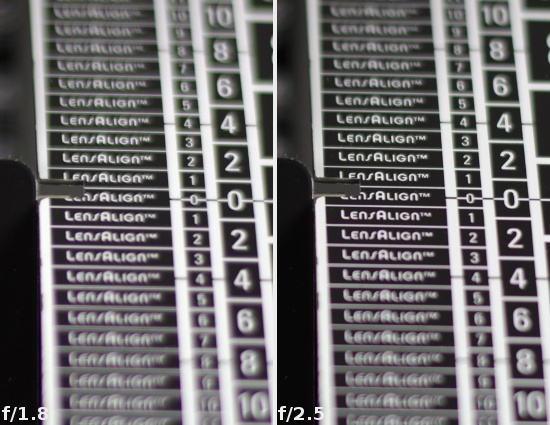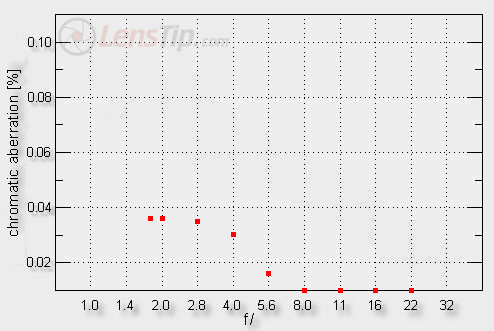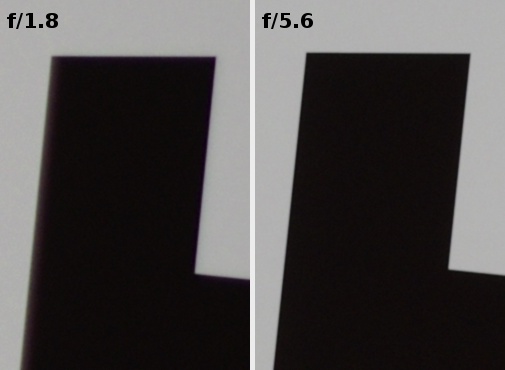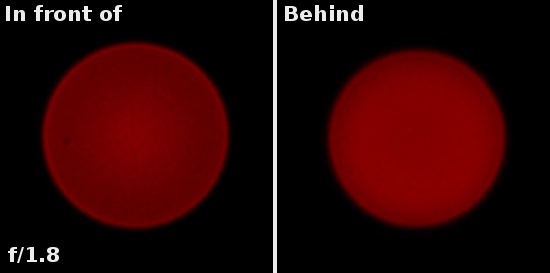Pentax smc DA 50 mm f/1.8
5. Chromatic and spherical aberration
Chromatic aberration
When it comes to the longitudinal chromatic aberration the tested Pentax is not entirely free of it. A slight colouring of images before and after the focus is noticeable at the maximum relative aperture and also on stopping down by 1 EV. Fortunately this effect is not especially pronounced.
 |
Please Support UsIf you enjoy our reviews and articles, and you want us to continue our work please, support our website by donating through PayPal. The funds are going to be used for paying our editorial team, renting servers, and equipping our testing studio; only that way we will be able to continue providing you interesting content for free. |
- - - - - - - - - - - - - - - - - - - - - - - - - - - - - - - - - - - - - - - - - - - - - - - -
The lateral chromatic aberration is corrected exceptionally well for a change. Its level is very low near the maximum relative aperture and literally zero after more significant stopping down. Here the Pentax deserves a round of applause.

 |
Spherical aberration
The lens didn’t show any focus shift symptoms so in this regard the spherical aberration is not bothersome. Still it is not corrected in a perfect way as you can notice looking at defocused light points. In front of the focus the circle has a noticeably lighter middle. When you move away from it the light intensity decreases and on the very edge it passes into a noticeably lighter rim. The image behind the focus has a more even light spread although also in its case you can notice rings near the very edge.







